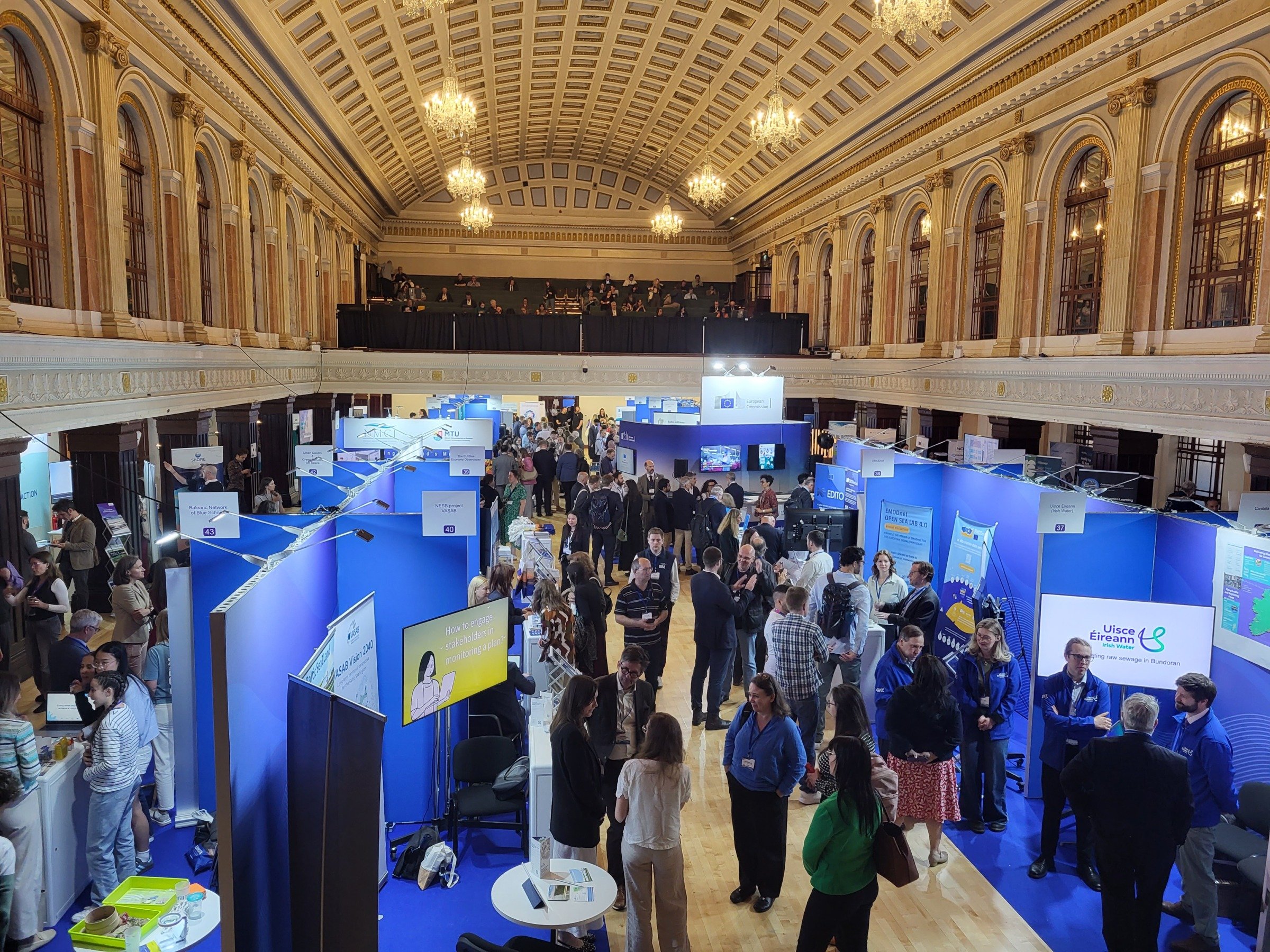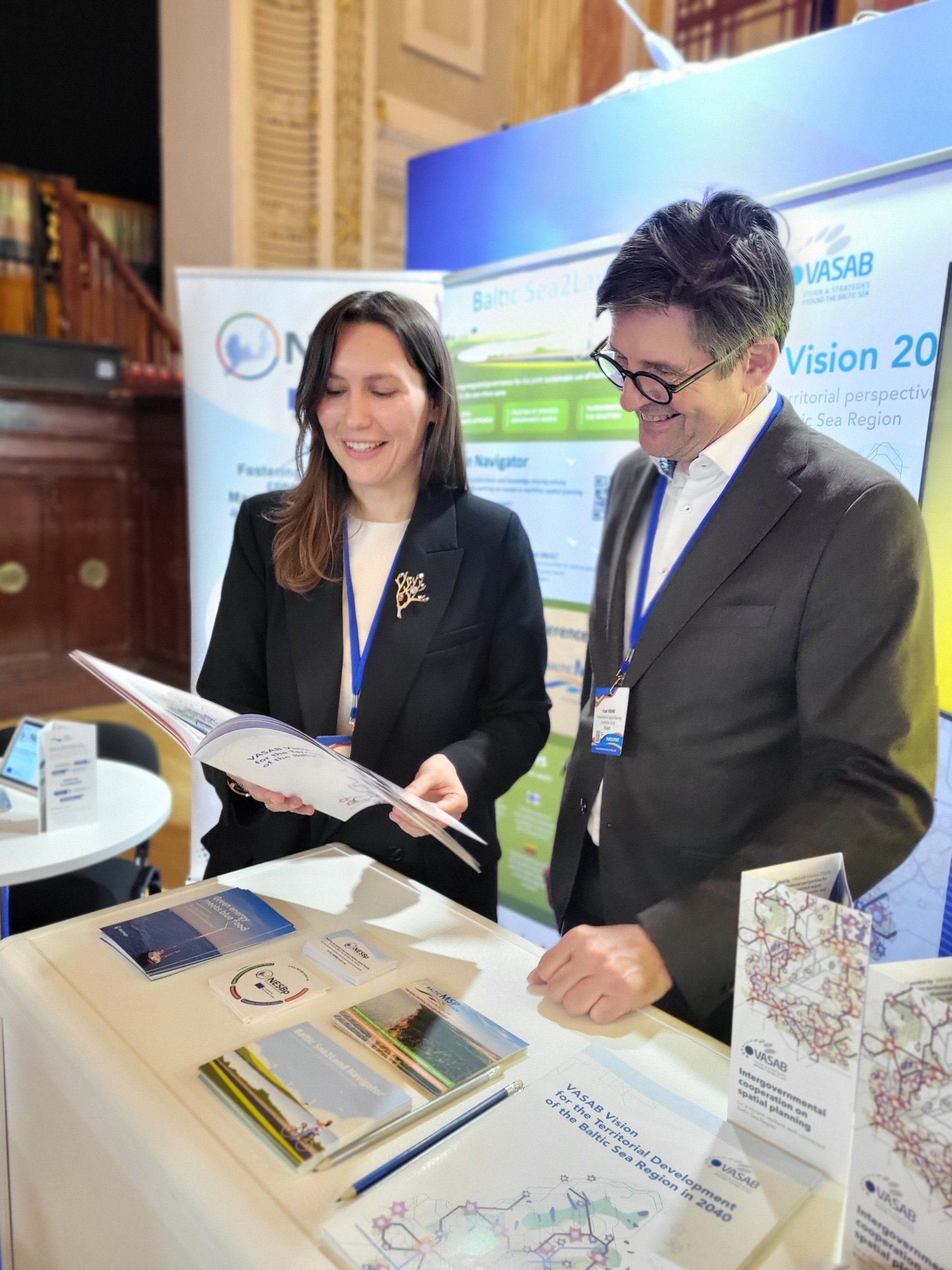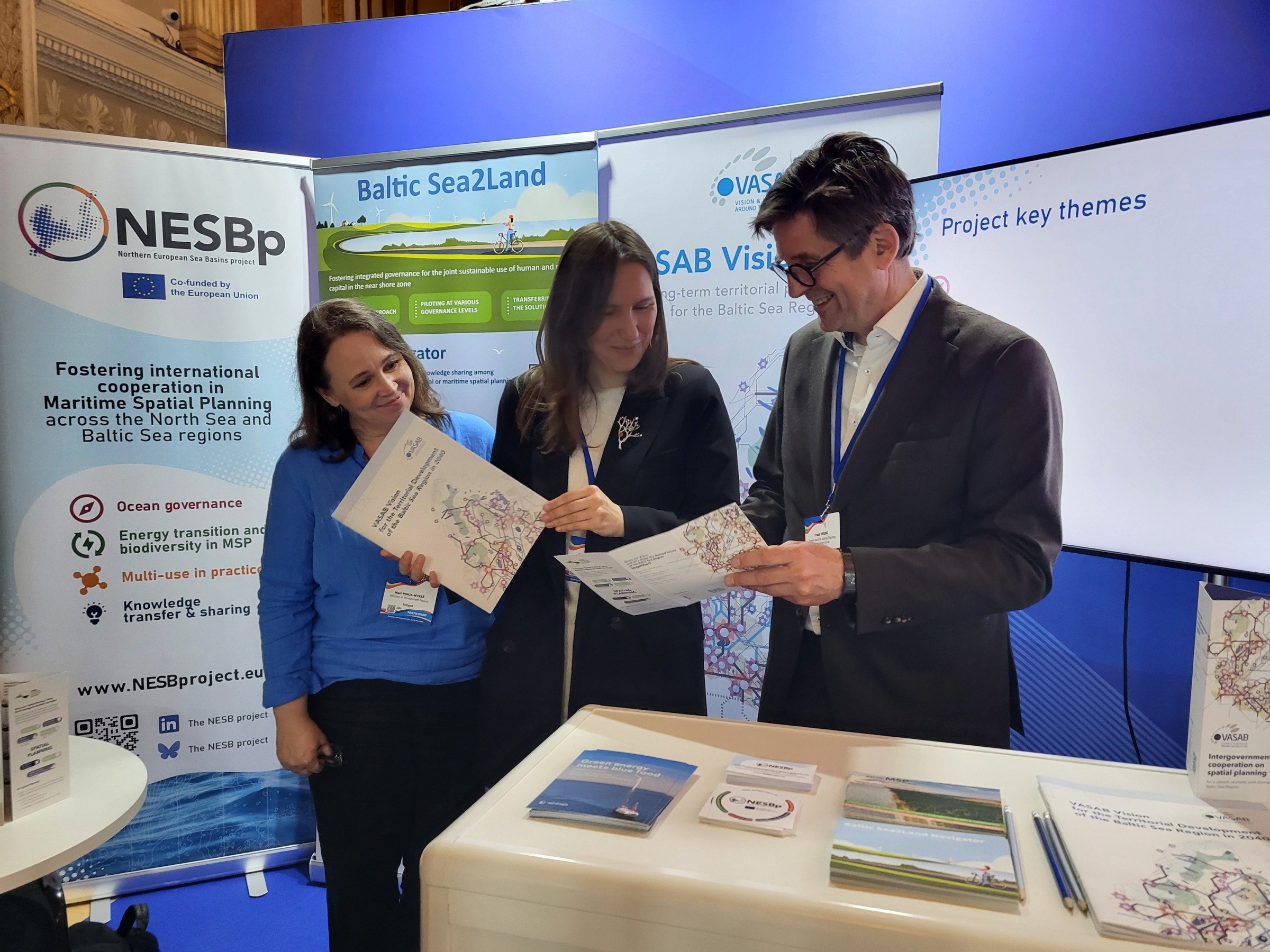From Strategy to Action: International Maritime Spatial Planning Meets Regional Needs in the Baltic Sea Region
It was once again time for the European maritime community to gather, network, discuss, and sketch out joint actions related to maritime affairs and the sustainable blue economy, as the European Maritime Days (EMD) took place this year in Cork, Ireland from May 21st to 23rd. We used the opportunity to look closer into international maritime spatial planning cooperation in the Baltic Sea region.
Finnish MSP is actively developed through international projects. Intergovernmental MSP and other spatial planning cooperation takes place in various groups, such as the VASAB Committee on Spatial Planning and Development of the Baltic Sea Region (CSPD/BSR), the HELCOM-VASAB Maritime Spatial Planning Working Group, and the MSP Planners’ Forum, an informal, open space for knowledge exchange, discussion, and learning among MSP planners, facilitated by VASAB Secretariat (Vision and Strategies Around the Baltic Sea).
At EMD, this cooperation was visible at a joint stand, where a collaborative MSP project, Interreg Baltic Sea2Land, involving six Baltic Sea countries, was presented. The project aims to support multi-level governance and to develop a Navigator tool to assist in planning. As collaboration is at the heart of the EMD days, we wanted to delve deeper into what international cooperation in the Baltic Sea looks like, how it influences national and regional planning, and what the hottest current issues are on spatial planners’ desks.

In 2025, the European Maritime Days took place in Cork, Ireland.
Strengthening Maritime Spatial Planning in the Baltic Sea Region — Perspectives from Macro-regional level to regional
For over three decades, cooperation in spatial planning across the Baltic Sea Region has been a cornerstone for regional development and integration. Today, this cooperation is more crucial than ever as planners face an evolving set of complex challenges ranging from geopolitical instability and energy transitions to biodiversity loss and digital transformation.
At the core of macro-regional cooperation is VASAB, an intergovernmental organisation that brings together Baltic Sea countries to shape joint spatial visions and actions. According to Margarita Vološina, a spatial planning and communications expert at VASAB Secretariat, the most urgent question the organisation is tackling today is how planning can enhance the resilience of territories, both locally and regionally. These resilience efforts are grounded in the VASAB Vision 2040, which outlines a strategic pathway toward a more connected, vibrant, and sustainable Baltic Sea Region.
The Vision, endorsed by ministers responsible for spatial planning in the Baltic Sea in 2023, offers guidance for action that crosses national, sectoral, and administrative boundaries on land and at sea. It reflects shared goals shaped through extensive stakeholder engagement. The national implementation is guided by the ministries, and the platforms for concrete intergovernmental collaboration, such as the CSPD/BSR and HELCOM-VASAB MSP Working Group, as well asinformal MSP Planners’ Forum, offer authorities the opportunity for continuous knowledge exchange and policy harmonization across the region.
Translating macro-level strategy into practice requires active national engagement. Frank Hering, Chair of the Finnish MSP Coordination Group and Planning Director at the Regional Council of Kymenlaakso, sees international strategies like Vision 2040 as a valuable compass – but acknowledges that they rarely sit directly on the desks of local planners. For them, effective communication from ministries and intermediary groups is critical to ensure that international goals actually inform national and regional decisions.
In Finland, MSP is now undergoing its first update. According to Hering, international issues will play a far greater role than before, driven largely by global and regional instability. Planning priorities such as energy infrastructure, biodiversity protection, connectivity, and security now take center stage. While these themes are covered in Vision 2040, the rapidly shifting geopolitical context already presents new demands not yet fully reflected in current strategies.

Margarita Vološina and Frank Hering taking a look at the VASAB Vision 2040.
To address this, Finnish maritime spatial planners have increasingly invested in scenario work – an approach Hering believes could also benefit macro-regional planning. By exploring different futures and uncertainties, planners can better prepare for disruptive change and support long-term spatial resilience.
Beyond formal documents, much of the real value in international cooperation lies in professional exchange. Hering emphasizes how groups like the MSP Planners’ Forum have directly enhanced his work, for example by providing examples, tools, and inspiration from neighboring countries. This peer-learning environment, now being considered for expansion to land-based planning, shows the ongoing need for community-building among spatial planners across borders.

When Baltic Sea, National, and Regional levels meet. VASAB (Margarita Vološina, middle), Ministry of the Environment (ministerial adviser, Mari Pohja-Mykrä, on the left) and Kymenlaakso Regional Council (Frank Hering, on the right) – all partners in the Baltic Sea2Land project and present at EMD fostering cooperation through joint visions and projects.
Ultimately, whether on the scale of a single coastline or an entire sea basin, the challenges of today demand shared solutions. And it is precisely through this mix of strategic vision and hands-on cooperation that spatial planning continues to evolve as a central tool for regional resilience in the Baltic Sea.
Cooperation continues and that is why VASAB would like to invite all those interested in maritime and coastal planning in the Baltic Sea Region to a major upcoming event – the 5th Baltic MSP Forum. Registration is open, and it will be a great opportunity to experience a sense of togetherness and build upon our shared knowledge and experience.





